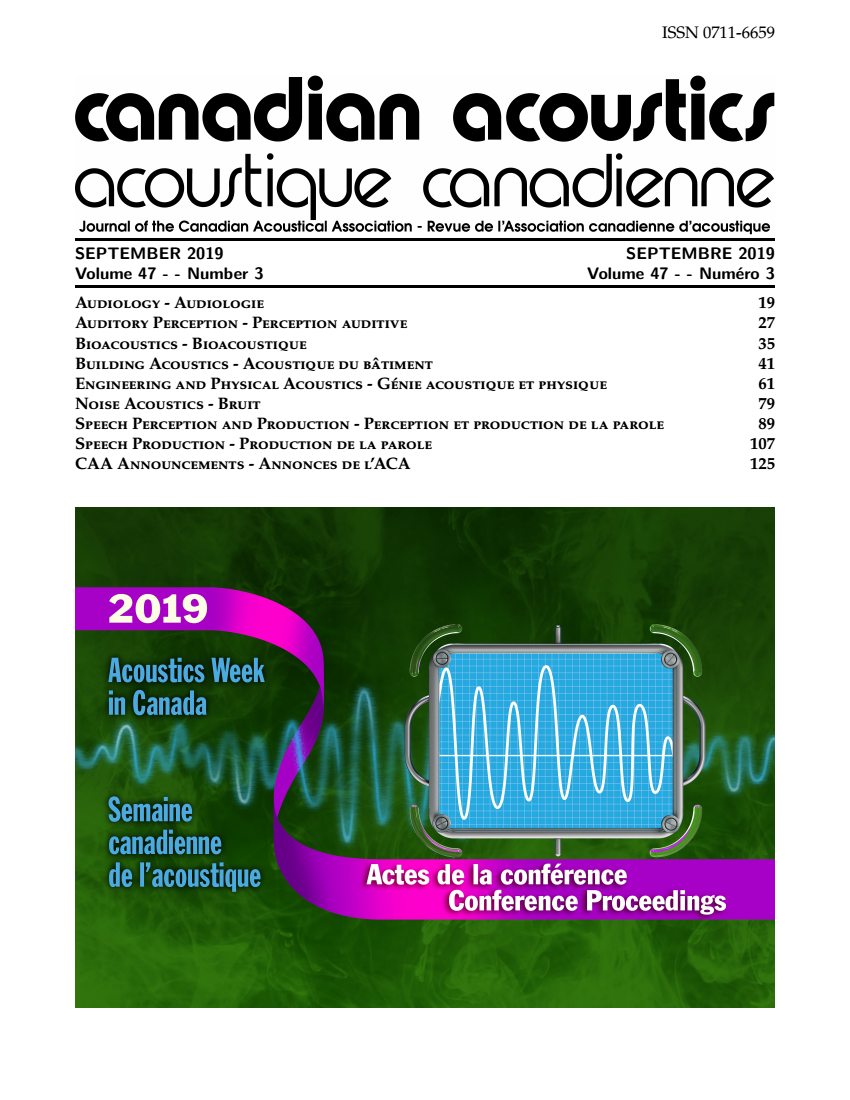Production Study of Spanish Spirantization in Naturalistic Speech
Abstract
Spanish spirantization is often cited as a case of phonetic reduction, in which oral closure movements are suggested to be produced in a failed/reduced form, and/or where speech muscles fail to achieve full activation. Other analyses treat spirantized variants as categorically distinct. The present study examines Spanish productions of the alveolar plosive /d/ in relation to its interdental variant in videos of natural speech produced by 12 Spanish speakers. Tokens of /d/ were contrasted to that of voiceless and nasal targets. Tokens were extracted, transcribed and coded for stress pattern and phonological environment by trained phoneticians. The area of visible tongue for /d/ in each video frame was measured and normalized. Differences in visible production indicate different active muscle groups for the dental /d/ vs. tongue protrusion in the interdental spirant. ANOVAs were performed on the area measurements, and chi-squared analyses were performed on the voiced, voiceless and nasal targets. Results indicate a bimodal distribution in tongue areas, indicating that the spirantized variants are produced with intent to achieve a separate target. This view is compatible with a modular approach to speech motor behavior.
Additional Files
Published
How to Cite
Issue
Section
License
Author Licensing Addendum
This Licensing Addendum ("Addendum") is entered into between the undersigned Author(s) and Canadian Acoustics journal published by the Canadian Acoustical Association (hereinafter referred to as the "Publisher"). The Author(s) and the Publisher agree as follows:
-
Retained Rights: The Author(s) retain(s) the following rights:
- The right to reproduce, distribute, and publicly display the Work on the Author's personal website or the website of the Author's institution.
- The right to use the Work in the Author's teaching activities and presentations.
- The right to include the Work in a compilation for the Author's personal use, not for sale.
-
Grant of License: The Author(s) grant(s) to the Publisher a worldwide exclusive license to publish, reproduce, distribute, and display the Work in Canadian Acoustics and any other formats and media deemed appropriate by the Publisher.
-
Attribution: The Publisher agrees to include proper attribution to the Author(s) in all publications and reproductions of the Work.
-
No Conflict: This Addendum is intended to be in harmony with, and not in conflict with, the terms and conditions of the original agreement entered into between the Author(s) and the Publisher.
-
Copyright Clause: Copyright on articles is held by the Author(s). The corresponding Author has the right to grant on behalf of all Authors and does grant on behalf of all Authors, a worldwide exclusive license to the Publisher and its licensees in perpetuity, in all forms, formats, and media (whether known now or created in the future), including but not limited to the rights to publish, reproduce, distribute, display, store, translate, create adaptations, reprints, include within collections, and create summaries, extracts, and/or abstracts of the Contribution.


